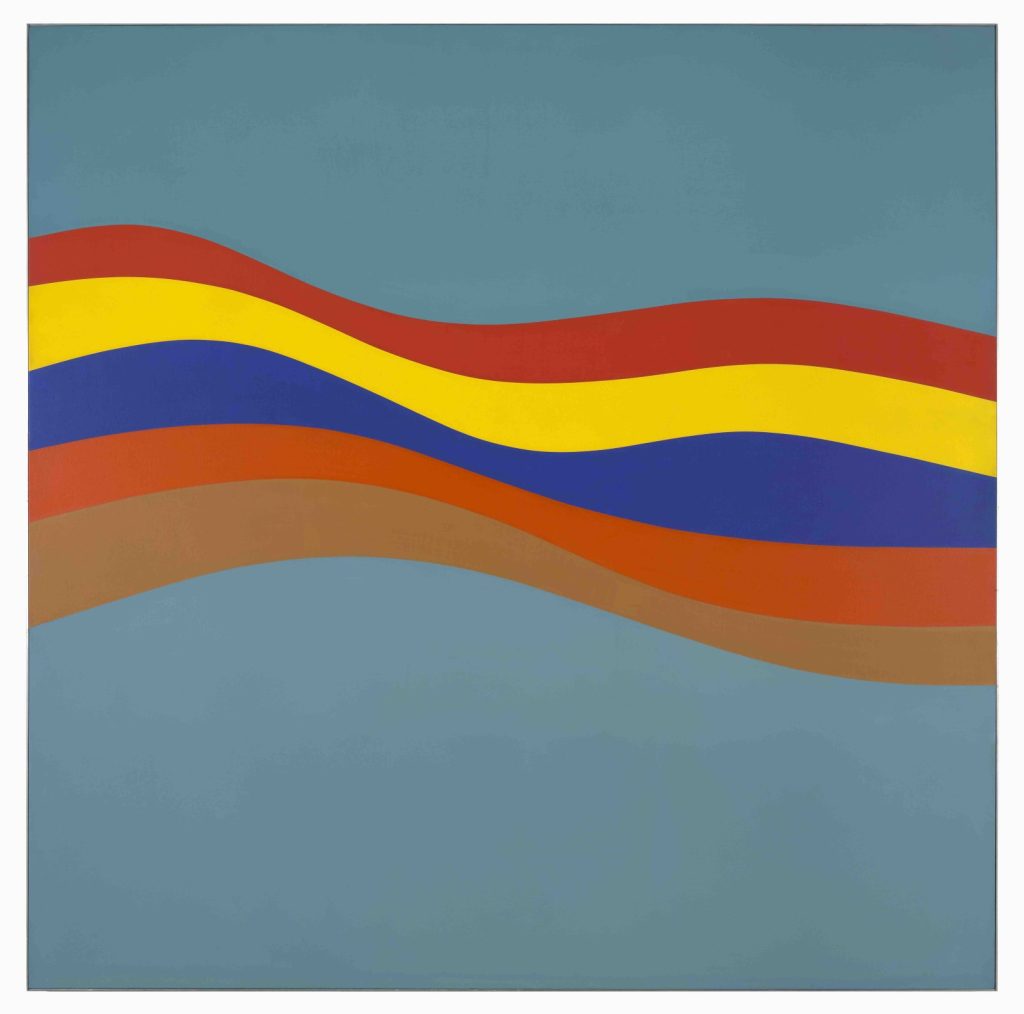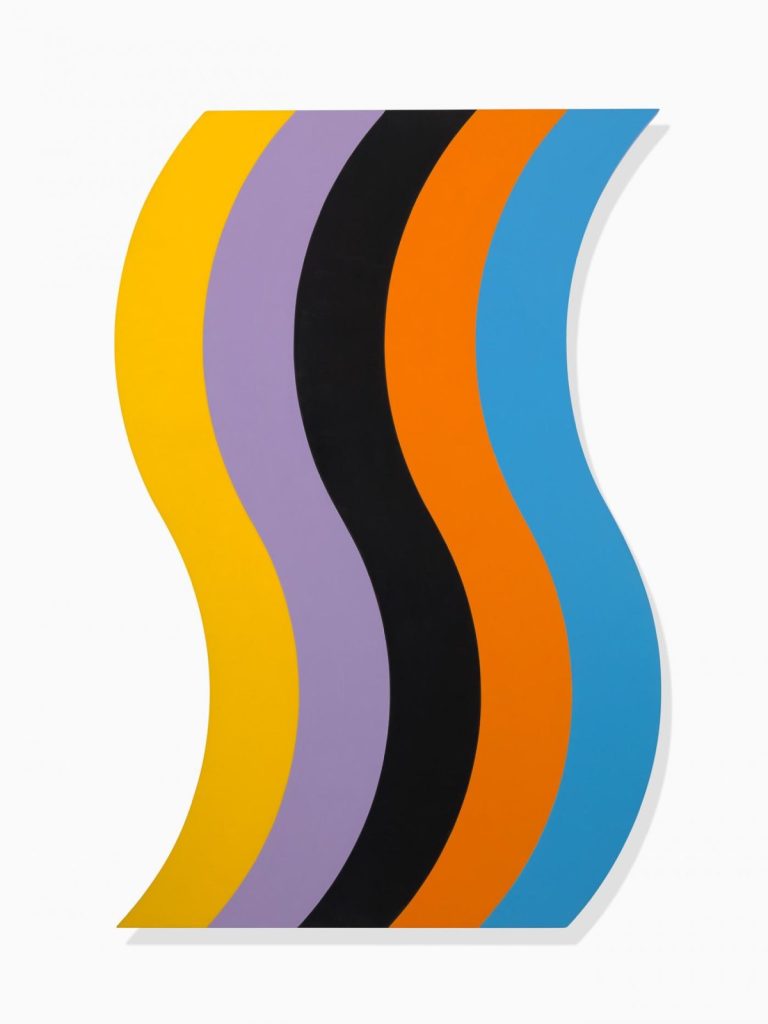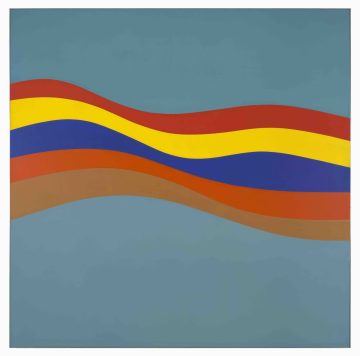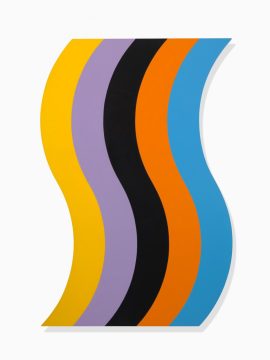Margaret Worth (b. 1944)


Samsara 31967
SPE on canvas
165 x 165cm
Sold to the Art Gallery of New South Wales
Exhibited
‘Margaret Worth, an exhibition of paintings and prints from the 1960s’, 2ndMarch – 25thMarch, 2017, Charles Nodrum Gallery
Essay
In his introduction to the Catalogue, Charles Nodrum comments, “Typical artists’ biographies might record youthful questioning and rejection of the standard school curriculum (both humanities and sciences) and an early talent for drawing – accompanied by an impatience to discard the first and embrace the second.
Not Margaret Worth. She studied music, physics, pure and applied maths, psychology and philosophy before going to the South Australian School of Art where she studied under Sydney Ball. “I was looking for a means to combine my wonder in science and in spirituality – a visual language that, like music and mathematics, could speak for both.”
The later group – the Genus series – uses, as the self-referential name implies, a single form or type from which further forms are constructed. Essentially they are all modular in principle and they are all rectilinear in practice. In Genus 2 No 2 four parallelograms make a rhombus. In Genus 0 No 3 (Art Gallery of NSW) two sets of three parallelograms are bolted together laterally and hung one above the other at an angle about 30° off the horizontal. The visual results are utterly different.
The earlier group – the Samsara series – differs on two points. The title suggests a reading beyond the purely formal Genus. Samsara, the doctrine of the repeated process of re- incarnation is common to both Hindu and Buddhist traditions. The very word therefore puts us on an interpretive path outside the intrinsic elements of the works themselves and links them to the widespread interest in Eastern philosophies that emerged in the 1950s and 60s.
The other clear difference is iconographic: they are all curvilinear. A glance at The Field catalogue shows a preference for the straight line and when the curve occurs it tends to manifest itself more prominently in the circle and the semi-circle rather than in asymmetric undulations. If this generalisation is right, then Margaret Worth’s two series exemplify both majority and minority positions.
Finally, in her own words a note on her practice: “Form and colour were to be as one, and the perfect outcome would have been to make light itself the form. But that was not achievable for me. Instead, I had the forms made with surfaces of minimal textural character – cotton canvas and marine plywood. The colour was made to become one with the surface by painting many thin layers of pigment, in water based polymer emulsion. The layers were absorbed into the surface and the colour areas were matched to the form. The results were as close a marriage between form and colour as I could achieve.”


Provenance
Charles Nodrum Gallery, Melbourne;
Private collection, Sydney
Essay
In his introduction to the Catalogue, Charles Nodrum comments, “Typical artists’ biographies might record youthful questioning and rejection of the standard school curriculum (both humanities and sciences) and an early talent for drawing – accompanied by an impatience to discard the first and embrace the second” [1].
Not Margaret Worth. She studied music, physics, pure and applied maths, psychology and philosophy before going to the South Australian School of Art where she studied under Sydney Ball. “I was looking for a means to combine my wonder in science and in spirituality – a visual language that, like music and mathematics, could speak for both.” [2]
The later group – the Genus series – uses, as the self-referential name implies, a single form or type from which further forms are constructed. Essentially they are all modular in principle and they are all rectilinear in practice. In Genus 2 No 2 four parallelograms make a rhombus. In Genus 0 No 3 (Art Gallery of NSW) two sets of three parallelograms are bolted together laterally and hung one above the other at an angle about 30° off the horizontal. The visual results are utterly different.
The earlier group – the Samsara series – differs on two points. The title suggests a reading beyond the purely formal Genus. Samsara, the doctrine of the repeated process of re- incarnation is common to both Hindu and Buddhist traditions. The very word therefore puts us on an interpretive path outside the intrinsic elements of the works themselves and links them to the widespread interest in Eastern philosophies that emerged in the 1950s and 60s.
The other clear difference is iconographic: they are all curvilinear. A glance at The Field catalogue shows a preference for the straight line and when the curve occurs it tends to manifest itself more prominently in the circle and the semi-circle rather than in asymmetric undulations. If this generalisation is right, then Margaret Worth’s two series exemplify both majority and minority positions.
Finally, in her own words a note on her practice: “Form and colour were to be as one, and the perfect outcome would have been to make light itself the form. But that was not achievable for me. Instead, I had the forms made with surfaces of minimal textural character – cotton canvas and marine plywood. The colour was made to become one with the surface by painting many thin layers of pigment, in water based polymer emulsion. The layers were absorbed into the surface and the colour areas were matched to the form. The results were as close a marriage between form and colour as I could achieve.” [3]
[1][2][3] ‘Margaret Worth, an exhibition of paintings and prints from the 1960s’, 2nd March – 25th March,2017, Charles Nodrum Gallery


